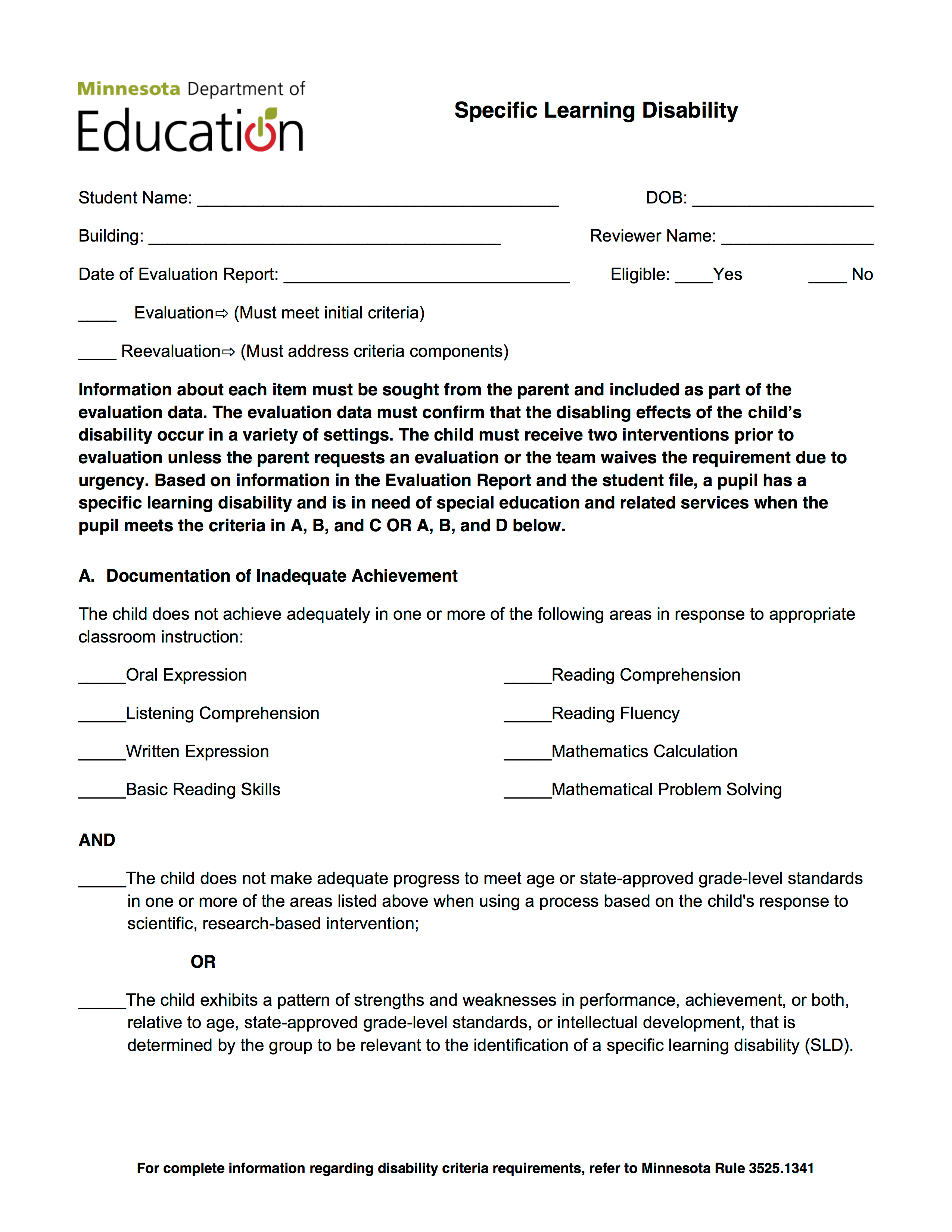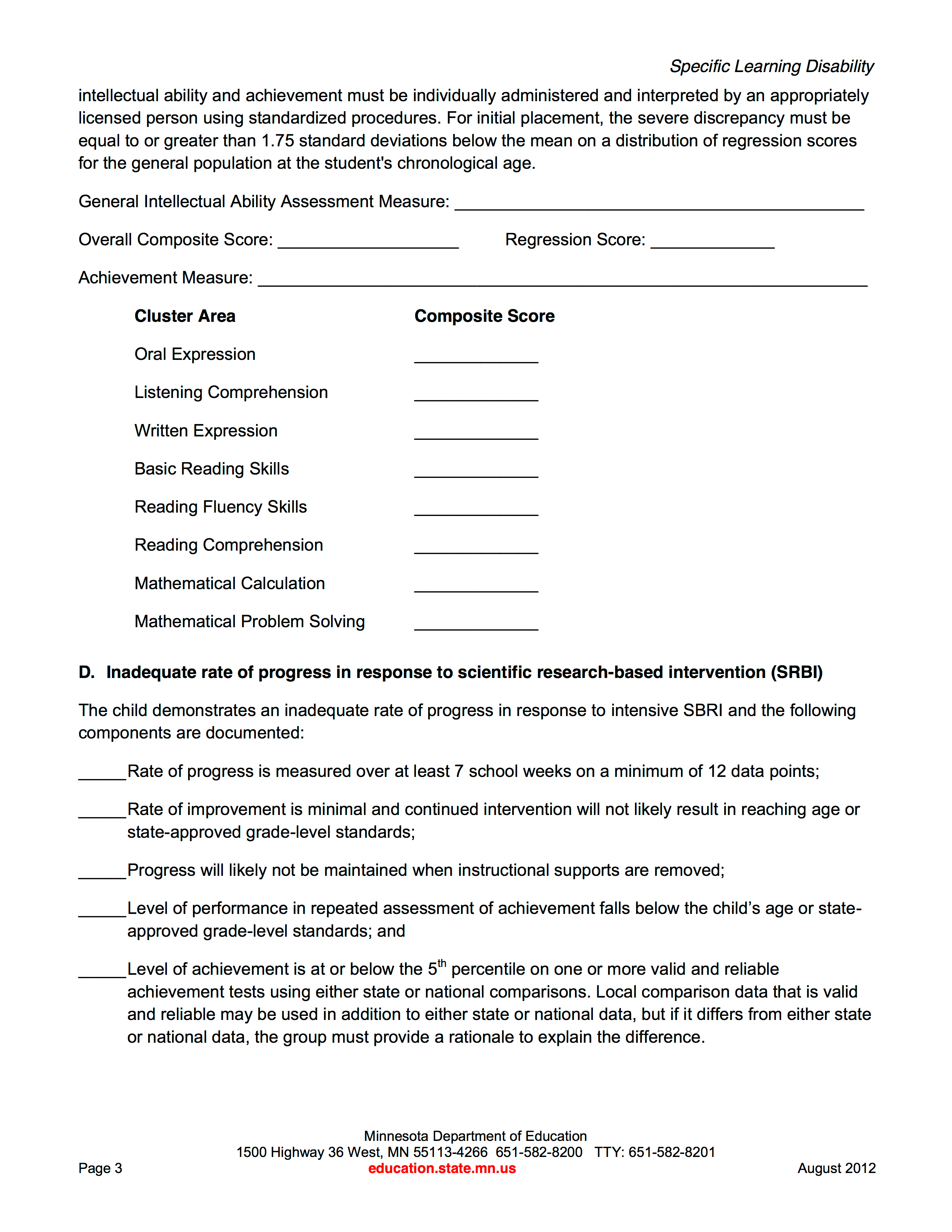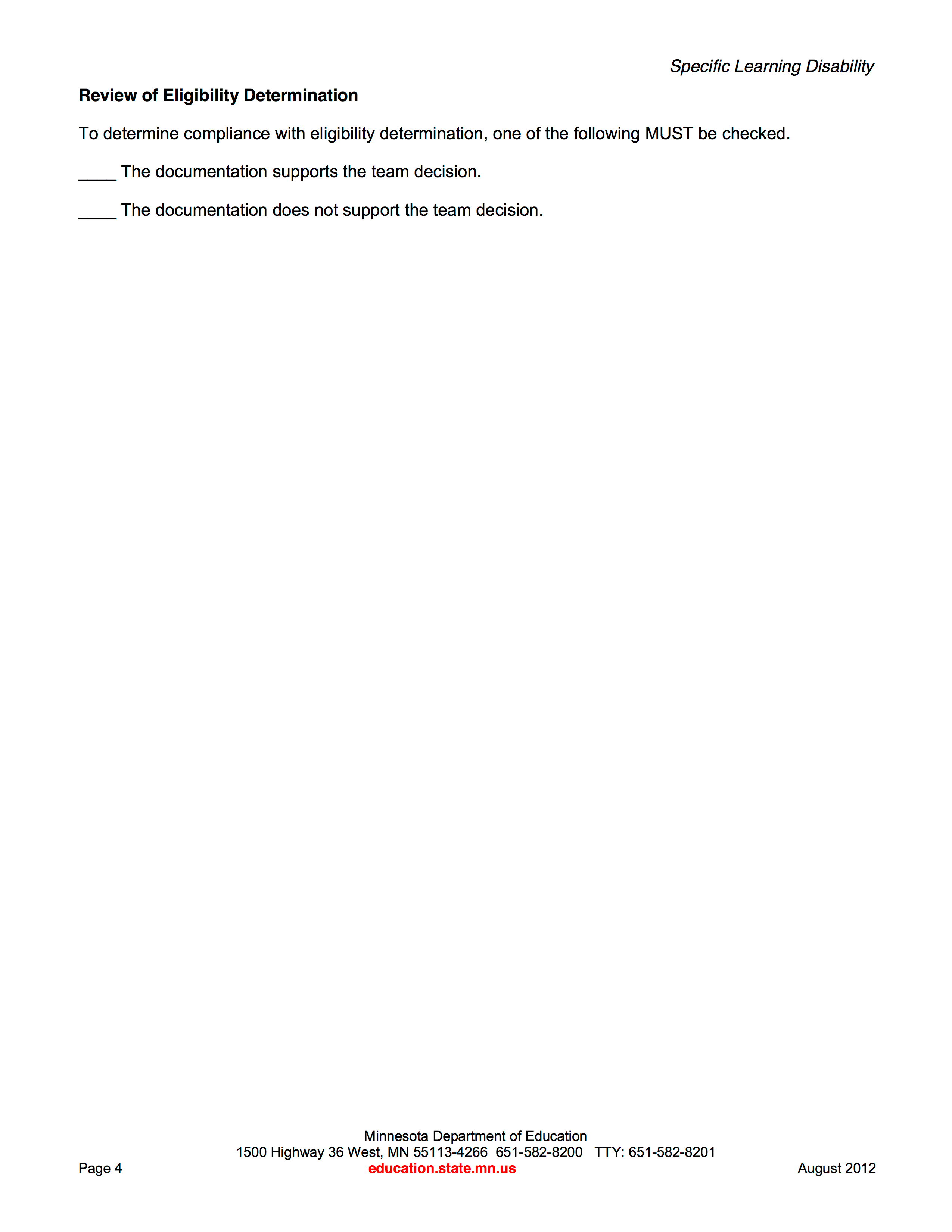
Specific Learning Disability
Disability Label & Prevalence |
Definition |
General Characteristics |
Identification & Assessment |
Educational Approaches |
Educational Placement Alternatives |
Specific Learning Disability 4% of General Population |
IDEA – a disorder in 1 or more of the basic psychological processes involved in understanding or in using language, spoken or written, which disorder may manifest itself in an imperfect ability to listen, think, speak, read, write, spell, or do mathematics. |
Problems in listening, reasoning, memory, attention, selecting and focusing on relevant stimuli, and the perception and processing of visual and/or auditory information. |
Standardized intelligence and achievement tests, criterion-referenced tests, curriculum based measurement, and direct and daily measurement. |
Content Enhancements: enhance the organization and delivery of curriculum content Learning Strategies: an individual’s approach to a learning task, includes how a person thinks and acts when planning, executing, and evaluating performance on a task and its outcomes. |
General Education Classroom Consultant Teacher Resource Room Separate Classroom
|
Description of 2 evidence-based strategies |
Peer-Assisted Learning Strategies (PALS) is a supplemental peer-tutoring program in which student pairs perform a structured set of activities in reading or math (PALS Reading and PALS Math, respectively). During the 30-35 minute peer-tutoring sessions, students take turns acting as the tutor, coaching and correcting one another as they work through problems. Pairs work together three or four times per week for reading sessions and two times per week for math sessions. The designation of tutoring pairs and skill assignment is based on teacher judgment of student needs and abilities, and teachers re assign tutoring pairs regularly. (US Department of Education) The Lindamood Phoneme Sequencing® (LiPS®) program is designed to teach students the skills they need to decode words and to identify individual sounds and blends in words. Initial activities engage students in discovering the lip, tongue, and mouth actions needed to produce specific sounds. After students are able to produce, label, and organize the sounds with their mouths, subsequent activities in sequencing, reading, and spelling use the oral aspects of sounds to identify and order them within words. The program also offers direct instruction in letter patterns, sight words, and context clues in reading. LiPS® is designed for emergent readers in kindergarten through grade 3 or for struggling, dyslexic readers. The program is individualized to meet students’ needs and is often used with students who have learning disabilities or difficulties. The version of the program tested here involved computer-supported activities. (US Department of Education) |
Practitioner Based Article related to this area: Include reference and summary of the article. |
Extra-Large Letter Spacing Improves Reading in Dyslexia: Just switching from a narrowly spaced face to one with more spaces between letters can significantly ease dyslexic students' reading difficulties. They found the children were able to read the wider-spaced text more than 20 percent faster and twice as accurately as the narrow type. (Education Week, 2012) |
MN Eligibility Checklist



